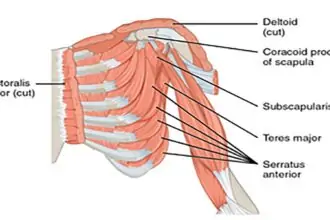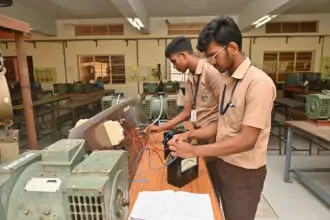What is epiphyseal plate?
The epiphyseal plate, also known as the growth plate, is a hyaline cartilage plate located at the ends of long bones in children and adolescents. It is responsible for longitudinal bone growth, meaning it allows bones to grow in length as a person matures. The epiphyseal plate consists of cartilage cells that divide and multiply, resulting in bone elongation. As a person reaches adulthood, the epiphyseal plate stabilizes and is replaced by hard bone, marking the end of longitudinal bone growth.

In the epiphyseal plate cartilage grows?
Yes, in the epiphyseal plate, cartilage grows. The epiphyseal plate is composed primarily of hyaline cartilage and is the site of longitudinal bone growth in children and adolescents. Cartilage cells within the epiphyseal plate undergo a process called endochondral ossification, where they divide and multiply, resulting in long bones. As these cartilage cells expand and mature, they are eventually replaced by bone tissue, contributing to bone growth and development. Thus, while cartilage is present and actively growing at the epiphyseal plate, it eventually transforms into bone as part of the bone growth process.

The presence of an epiphyseal plate indicates
The presence of an epiphyseal plate indicates that the bone is still actively growing. Epiphyseal plates, also known as growth plates, are found at the ends of long bones in children and adolescents. Its presence indicates that longitudinal bone growth is occurring, as the cartilage cells within the epiphyseal plate are actively dividing and multiplying to lengthen the bone. Once a person reaches adulthood, the epiphyseal plate is fixed and replaced by hard bone, marking the end of longitudinal bone growth. Therefore, the presence of an epiphyseal plate indicates a stage of growth and development of the skeletal system.
Which zone of the epiphyseal plate is located the farthest from the marrow space?
The zone of the epiphyseal plate farthest from the marrow space is the zone of reserve cartilage. This zone is farthest from the marrow space and is located at the end of the epiphysis away from the center of primary ossification. In the epiphyseal plate, there are several distinct zone’s including the resting cartilage zone, the expanded cartilage zone, the hypertrophic cartilage zone, and the calcified cartilage zone. The reserve cartilage zone is the zone where resting cartilage cells are located and serves as a reserve for the proliferation and differentiation of new cartilage cells during bone growth.

When the epiphyseal plate is replaced by bone
The epiphyseal plate is replaced by bone through a process called epiphyseal closure or epiphyseal fusion. This process usually occurs in late adolescence or early adulthood.
As a person reaches maturity, the epiphyseal plate gradually fades, meaning that the cartilage cells within the plate stop their activity and are replaced by bone tissue. This ossification process occurs through the deposition of minerals such as calcium and phosphate, which harden the cartilage matrix, transforming it into bone.
Once the epiphyseal plate is fully oscillated and fused to the adjacent bone, longitudinal bone growth ceases and the bone reaches its final adult length. At this point, the epiphyseal line, a thin line of compact bone, replaces the epiphyseal plate, marking where the growth plate used to be. This process varies slightly between individuals but usually occurs in the teenage to early twenties, depending on factors such as genetics, nutrition and hormonal balance.
Where is epiphyseal plate located?
The epiphyseal plate, also known as the growth plate, is located at the ends of the long bones of the human body. Specifically, it is found between the metaphysis (the wide part at the end of the bone) and the epiphysis (the rounded end of the bone).
In long bones, such as the femur (thigh bone) or humerus (upper arm bone), the epiphyseal plate is located near the articular cartilage, which covers the joint surface. This position allows for longitudinal bone growth, as cartilage cells within the epiphyseal plate continue to grow, multiply, and eventually ossify, contributing to bone elongation into adulthood.
Read More!






